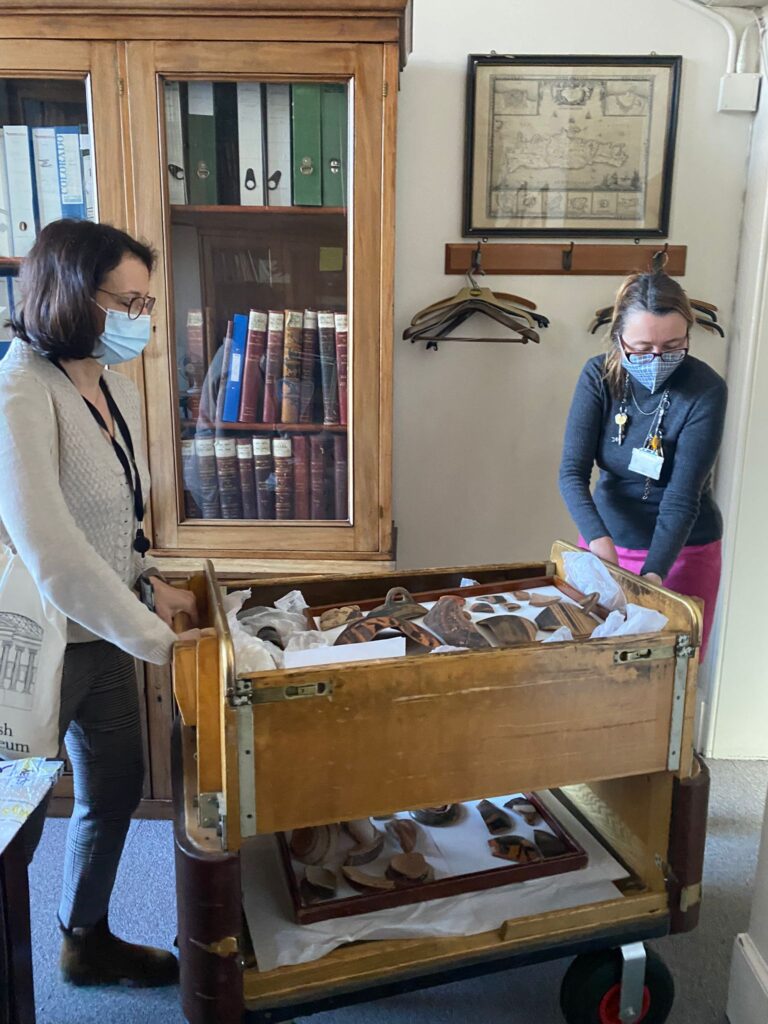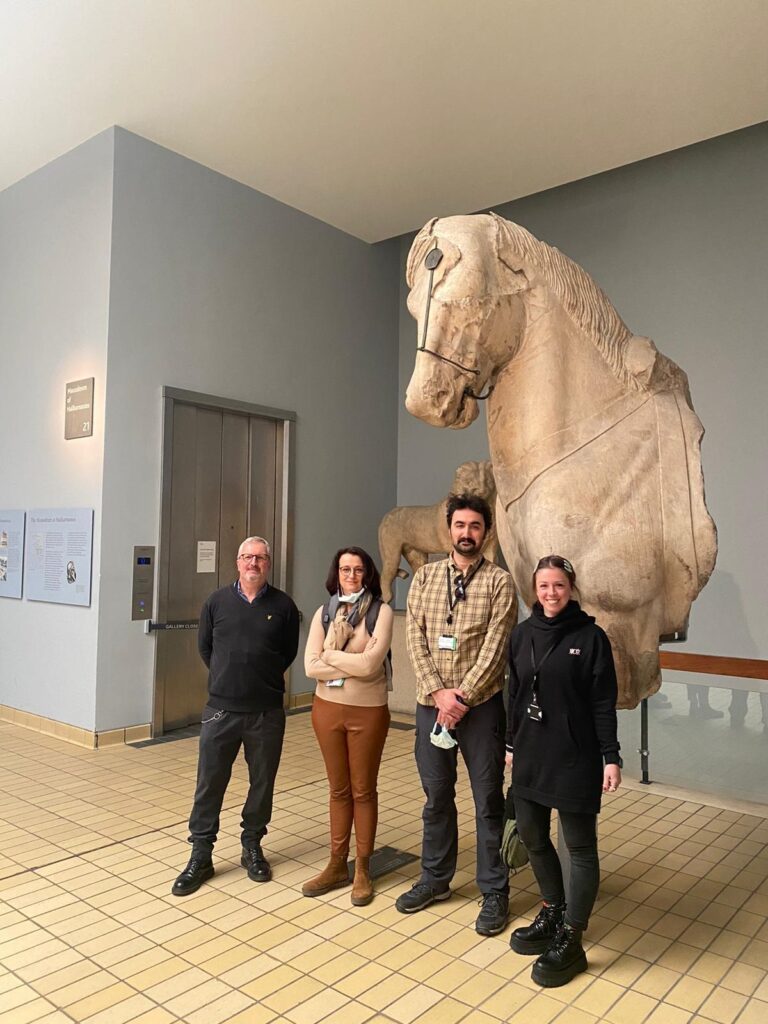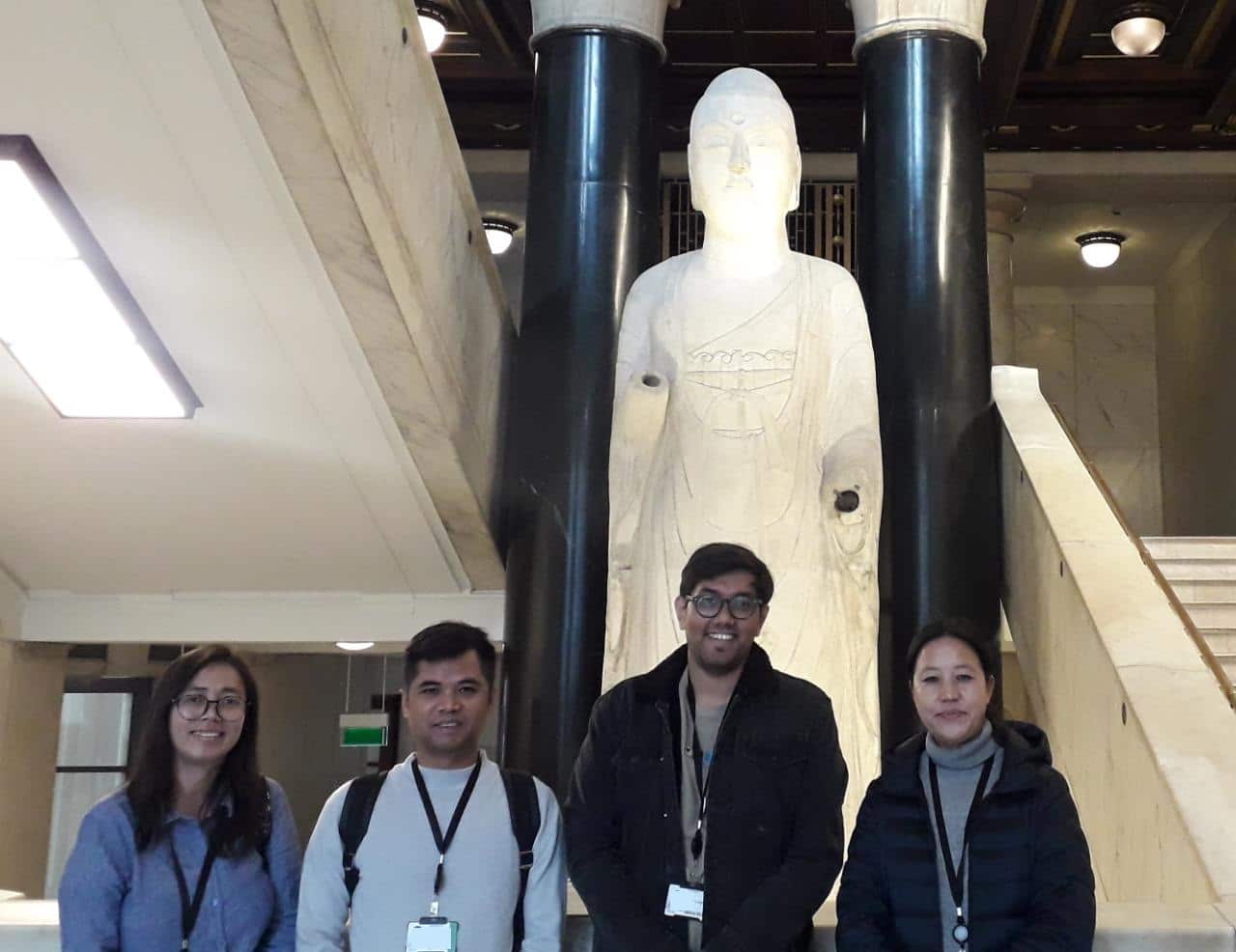Departmental time during the International Training Programme 2021
Written by Claire Messenger, Manager, International Training Programme
For the fellows, one of the highlights of the ITP is the allocated departmental time, where they can work closely with staff and collections directly relevant to their professional specialisms.
Departmental times allows time and space for the fellows to be able to tour galleries and storerooms with specialists, learn more about curators’ current projects and programmes, and share skills and expertise on the Museum’s collection. In many cases, departmental colleagues will be able to give fellows the opportunity to see, and work with, objects from the collection that they have expressed a desire to see in their pre-programme paperwork.



Working in smaller groups means that close relationships between museum colleagues are developed. These relationships that begin during the summer programme can lead to future collaborations, which have ranged from fieldwork and excavation support, publications, further collections research projects to loans and exhibitions.


Departments for the 2021 onsite programme are Africa, Oceania and the Americas; Asia; Coins and Medals; Egypt and Sudan; Greece and Rome and Middle East.
And some of the projects and programmes that have been shared with the fellows 2021 are:-
- Eastern Mediterranean archaeology, architecture and display.
- Pictorial archives and historical photographic collections.
- Developing supportive infrastructure to combat looting.
- From documenting sherds to a major collaborative research project: the Naukratis project.
- Touring Room 42, the Albukhary Foundation Gallery and Life in a cup exhibition.
- New acquisitions – object histories, narratives and engagement.
- Curating human remains.
- Greek sculpture and architecture collection: acquisitions and research.
- Collecting ephemera.
- Creating audio guides.
- Cuneiform writing and how it works.
- Ashurbanipal and his library.
- Assyrian Medicine; tablets with medical texts.
- Modern and contemporary Middle Eastern Art.
- Textiles: handling techniques, mount making and storage.



Colleagues across the Museum have been delighted to share their projects and programmes with our ITP fellows and get their valuable feedback and input.
